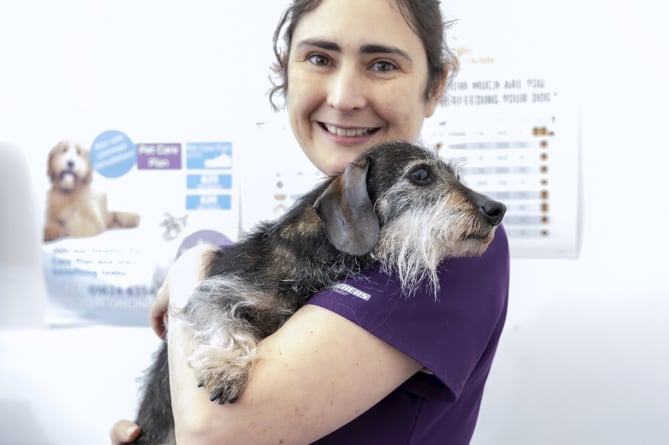Strand Vets, in Port Erin, has become the first veterinary practice on the island to offer laparoscopic surgery, commonly known as keyhole surgery, following an investment of more than £40,000 in the latest medical equipment.
A range of keyhole surgeries are available, most commonly spays where female cats and dogs are neutered by removing their ovaries to prevent unexpected pregnancies, as well as biopsies and other procedures.
In laparoscopic surgery, small instruments and a camera are inserted into the patient via a small incision in the skin, and the procedure is performed remotely, which requires very small entry wounds and means there is minimal trauma to internal organs.
‘It’s already commonplace in human medicine and there’s no doubt this is the future of pet surgery because it’s far less invasive and causes less bleeding and trauma, as well as fewer complications.
‘There are still misconceptions in the veterinary industry surrounding keyhole surgery. One is that because we make more incisions for keyhole surgery, it is more painful. However, making very small incisions allows for a small camera to provide a much clearer visual to the inflated abdomen.
‘Tissues can then be cauterised with precision and not torn, which results in less pain and a much faster recovery time. The tiny incisions can often be closed with a single skin stitch and in some cases, none are even necessary.
‘This is a major technological advancement compared to a standard spay which requires multiple stitches and follow up appointments.
‘A further misconception is that, with a standard spay, the initial incision can be made as small as possible and is then the same as keyhole surgery. However, without the camera, it can be difficult to identify the uterus which often means more stretching of tissue, resulting in more bleeding and trauma.
‘This is more likely to result in complications, contributes to higher levels of post operative pain and means there is a higher risk of infection as the abdomen is more exposed.
‘In most cases, after undergoing keyhole surgery, pets will only require one check-up, two days after the operation and by this time, they are usually back to normal, compared to a typical 10 -14-day recovery period after a traditional spay.’
Ciara added: ‘We’ve now even carried out laparoscopic spays on a pair of pet pigs, which we believe to be one of the first in the world. The procedure was like a dog operation, with a few subtle differences, such as the canula going in the pig’s ear veins, rather than the leg. Afterwards both pigs made a very quick recovery.
‘We’ve also just invested in extra equipment that lets us perform the procedure on cats – everything is the same, just a little smaller.’




